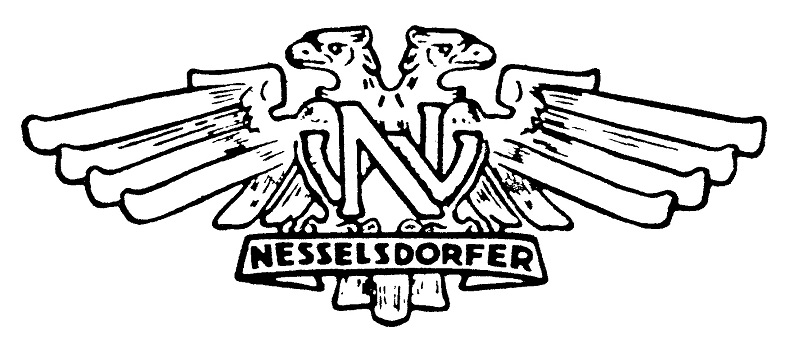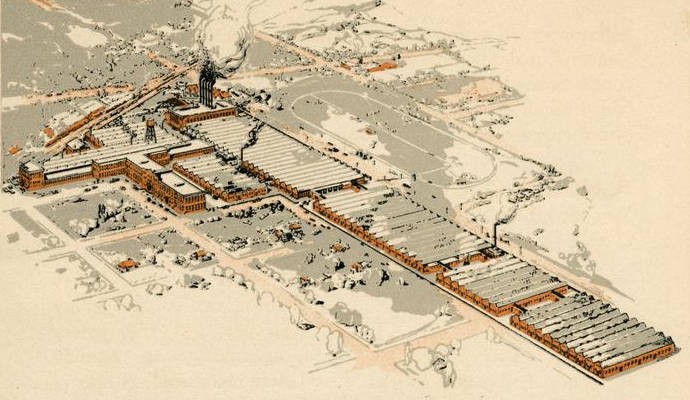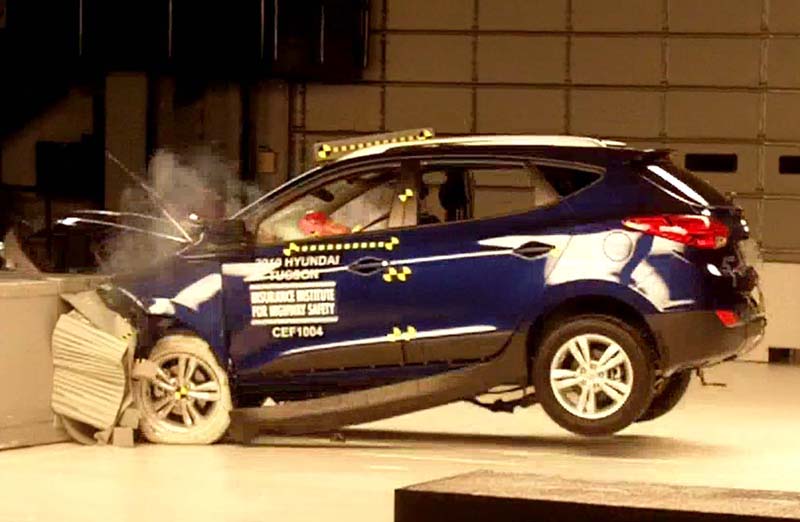|
Tatra (company)
Tatra is a Czech vehicle manufacturer from Kopřivnice. It is owned by the TATRA TRUCKS a.s. company, and it is the third oldest company in the world producing motor vehicles with an unbroken history. The company was founded in 1850 as ''Ignatz Schustala & Cie''. In 1890 the company became a joint-stock company and was renamed the ''Nesselsdorfer Wagenbau-Fabriksgesellschaft''. In 1897, the ''Nesselsdorfer Wagenbau-Fabriksgesellschaft'' produced the Präsident, which was the first factory-produced automobile with a petrol engine to be made in Central and Eastern Europe. The First Truck was made a year later, in 1898. In 1918, the company was renamed ''Kopřivnická vozovka a.s.'', and in 1919 it changed from the Nesselsdorfer marque to the ''Tatra'' badge, named after the nearby Tatra Mountains on the Czechoslovak- Polish border (now on the Polish- Slovak border). In the interwar period, Tatra came to international prominence with its line of affordable cars based on ba ... [...More Info...] [...Related Items...] OR: [Wikipedia] [Google] [Baidu] |
NW First Truck
Nesselsdorfer Wagenbau-Fabriks-Gesellschaft (NW) First Truck is an antique truck manufactured by Nesselsdorfer Wagenbau-Fabriks-Gesellschaft A.G. (now known as Tatra) in 1899. A unique feature of the engine setup was that the two engines could be operated sequentially depending on the load requirements. After the company finished its first passenger car, named the Präsident, it focused on manufacturing a truck. The First Truck represents the beginning of the long tradition of Tatra commercial vehicles. Design The truck was a flatbed with covered loading area and with a top over the personnel compartment, which could seat two. The loading area was x and had 2,5 tons capacity. There are poles in its corners, which carry the roof, most of the rear face wall middle part is tiltable (similar to low divided side wals) as a flatbed rear loading ramp. The seat for two is in front of the loading area. The front axle carries the iron frame via two elliptical leaf springs. The wooden ... [...More Info...] [...Related Items...] OR: [Wikipedia] [Google] [Baidu] |
Automotive Industry
The automotive industry comprises a wide range of company, companies and organizations involved in the design, Business development, development, manufacturing, marketing, selling, Maintenance, repairing, and Custom car, modification of motor vehicles. It is one of the world's largest industry (economics), industries by revenue (from 16% such as in France up to 40% in countries such as Slovakia). The word ''automotive'' comes from the Greek language, Greek ''autos'' (self), and Latin ''motivus'' (of motion), referring to any form of self-powered vehicle. This term, as proposed by Elmer Ambrose Sperry, Elmer Sperry (1860–1930), first came into use to describe automobiles in 1898. History The automotive industry began in the 1860s with hundreds of manufacturers pioneering the Brass Era car, horseless carriage. Early car manufacturing involved manual assembly by a human worker. The process evolved from engineers working on a stationary car to a conveyor belt system where the ... [...More Info...] [...Related Items...] OR: [Wikipedia] [Google] [Baidu] |
Vehicle Manufacturer
The automotive industry comprises a wide range of companies and organizations involved in the design, development, manufacturing, marketing, selling, repairing, and modification of motor vehicles. It is one of the world's largest industries by revenue (from 16% such as in France up to 40% in countries such as Slovakia). The word ''automotive'' comes from the Greek ''autos'' (self), and Latin ''motivus'' (of motion), referring to any form of self-powered vehicle. This term, as proposed by Elmer Sperry (1860–1930), first came into use to describe automobiles in 1898. History The automotive industry began in the 1860s with hundreds of manufacturers pioneering the horseless carriage. Early car manufacturing involved manual assembly by a human worker. The process evolved from engineers working on a stationary car to a conveyor belt system where the car passed through multiple stations of more specialized engineers. In the 1960s, robotic equipment was introduced, and most car ... [...More Info...] [...Related Items...] OR: [Wikipedia] [Google] [Baidu] |
Tatra 77
The Tatra 77 (T77) is one of the first serial-produced, truly aerodynamically-designed automobiles, produced by Czechoslovak company Tatra (company), Tatra from 1934 to 1938. It was developed by Hans Ledwinka and Paul Jaray, the Zeppelin aerodynamic engineer. Launched in 1934, the Tatra 77 is a coach-built automobile, constructed on a platform chassis with a pressed box-section steel backbone rather than Tatra's trademark backbone chassis, tubular chassis, and is powered by a rear-mounted 2.97-litre air-cooled V8 engine, in later series increased to a 3.4-litre engine. It possessed advanced engineering features, such as overhead valves, hemispherical combustion chambers, a dry sump, fully independent suspension, rear swing axles and extensive use of lightweight magnesium alloy for the engine, transmission, suspension and body. The average drag coefficient of a 1:5 model of Tatra 77 was recorded as 0.2455. The later model T77a, introduced in 1935, has a top speed of over due to it ... [...More Info...] [...Related Items...] OR: [Wikipedia] [Google] [Baidu] |
Tatra 11
The Tatra T11 is an automobile that was produced from 1923 through 1927. It was the first Tatra model to use backbone tube chassis, swinging half-axles and air-cooled engine, the development of which is still in use on the trucks produced by Tatra to this day. Origins Hans Ledwinka created the design of the T11 while working for Steyr in Austria. He believed there was a need for a small car, and carried out the work in his own time. His design offered to the Steyr management was rejected. He left the company soon after to work for a previous employer, Nesseldorfer, in Moravia Moravia ( ; ) is a historical region in the eastern Czech Republic, roughly encompassing its territory within the Danube River's drainage basin. It is one of three historical Czech lands, with Bohemia and Czech Silesia. The medieval and early ..., which was soon to become Tatra. This was in 1921 and the development of the T11 started soon after. The T11 was produced between 1923 and 1927 with 3,847 exa ... [...More Info...] [...Related Items...] OR: [Wikipedia] [Google] [Baidu] |
Air-cooled Engine
Air-cooled engines rely on the circulation of air directly over heat dissipation fins or hot areas of the engine to cool them in order to keep the engine within operating temperatures. Air-cooled designs are far simpler than their liquid-cooled counterparts, which require a separate radiator, coolant reservoir, piping and pumps. Air-cooled engines are widely seen in applications where weight or simplicity is the primary goal. Their simplicity makes them suited for uses in small applications like chainsaws and lawn mowers, as well as small generators and similar roles. These qualities also make them highly suitable for aviation use, where they are widely used in general aviation aircraft and as auxiliary power units on larger aircraft. Their simplicity, in particular, also makes them common on motorcycles. Introduction Most modern internal combustion engines are cooled by a closed circuit carrying liquid coolant through channels in the engine block and cylinder head. A fl ... [...More Info...] [...Related Items...] OR: [Wikipedia] [Google] [Baidu] |
Backbone Chassis
Backbone tube chassis is a type of automobile construction chassis that is similar to the body-on-frame design. Instead of a two-dimensional Vehicle frame#Ladder Frame, ladder-type structure, it consists of a strong tubular backbone (usually rectangular in Cross section (geometry), cross section) that connects the front and rear Suspension (vehicle), suspension attachment areas. A body is then placed on this structure. It was first used in the English Rover 8hp of 1904 and then the French Simplicia (automobile), Simplicia automobile in 1909. The backbone chassis was extensively developed by Hans Ledwinka who used it in greater numbers on the Tatra 11 and subsequent vehicles. Ledwinka later used backbone frames with central tubes and axles with swinging driveshafts on Tatra (company), Tatra trucks, becoming known as ''Tatra-concept''. Design The truck backbone chassis is a design feature of Czech Tatra (company)#Trucks, Tatra heavy trucks (cross-country, military etc.). Hans Led ... [...More Info...] [...Related Items...] OR: [Wikipedia] [Google] [Baidu] |
Slovakia
Slovakia, officially the Slovak Republic, is a landlocked country in Central Europe. It is bordered by Poland to the north, Ukraine to the east, Hungary to the south, Austria to the west, and the Czech Republic to the northwest. Slovakia's mostly mountainous territory spans about , hosting a population exceeding 5.4 million. The capital and largest city is Bratislava, while the second largest city is Košice. The Slavs arrived in the territory of the present-day Slovakia in the 5th and 6th centuries. From the late 6th century, parts of modern Slovakia were incorporated into the Pannonian Avars, Avar Khaghanate. In the 7th century, the Slavs played a significant role in the creation of Samo's Empire. When the Avar Khaghanate dissolved in the 9th century, the Slavs established the Principality of Nitra before it was annexed by the Great Moravia, Principality of Moravia, which later became Great Moravia. When Great Moravia fell in the 10th century, the territory was integrated i ... [...More Info...] [...Related Items...] OR: [Wikipedia] [Google] [Baidu] |
Poland
Poland, officially the Republic of Poland, is a country in Central Europe. It extends from the Baltic Sea in the north to the Sudetes and Carpathian Mountains in the south, bordered by Lithuania and Russia to the northeast, Belarus and Ukraine to the east, Slovakia and the Czech Republic to the south, and Germany to the west. The territory has a varied landscape, diverse ecosystems, and a temperate climate. Poland is composed of Voivodeships of Poland, sixteen voivodeships and is the fifth most populous member state of the European Union (EU), with over 38 million people, and the List of European countries by area, fifth largest EU country by area, covering . The capital and List of cities and towns in Poland, largest city is Warsaw; other major cities include Kraków, Wrocław, Łódź, Poznań, and Gdańsk. Prehistory and protohistory of Poland, Prehistoric human activity on Polish soil dates to the Lower Paleolithic, with continuous settlement since the end of the Last Gla ... [...More Info...] [...Related Items...] OR: [Wikipedia] [Google] [Baidu] |
Czechoslovakia
Czechoslovakia ( ; Czech language, Czech and , ''Česko-Slovensko'') was a landlocked country in Central Europe, created in 1918, when it declared its independence from Austria-Hungary. In 1938, after the Munich Agreement, the Sudetenland became part of Nazi Germany, while the country lost further territories to First Vienna Award, Hungary and Trans-Olza, Poland (the territories of southern Slovakia with a predominantly Hungarian population to Hungary and Zaolzie with a predominantly Polish population to Poland). Between 1939 and 1945, the state ceased to exist, as Slovak state, Slovakia proclaimed its independence and Carpathian Ruthenia became part of Kingdom of Hungary (1920–1946), Hungary, while the German Protectorate of Bohemia and Moravia was proclaimed in the remainder of the Czech Lands. In 1939, after the outbreak of World War II, former Czechoslovak President Edvard Beneš formed Czechoslovak government-in-exile, a government-in-exile and sought recognition from the ... [...More Info...] [...Related Items...] OR: [Wikipedia] [Google] [Baidu] |
Präsident
The Präsident was an automobile manufactured by the (Nesselsdorf or NW), since 1919 Tatra, in 1897. It was the first practical, factory-produced petrol engine automobile built in Central and Eastern Europe ( Siegfried Marcus's earlier cars were experimental and not practical). It was constructed by and Hans Ledwinka. The automobile was more of a carriage without horses than a car in modern sense. The car is steered via handlebars (while most of the cars of the era had a tiller). The wooden bodywork is placed on an iron frame. It has four seats and a convertible top that would cover only the rear seats. Both axles have suspension of semi-elliptical leaf springs. The wheels were similar to the ones of a horse carriage, but had rubber tyres. The car had a two cylinder spark ignition Benz engine placed by the rear axle. History In 1895, NW's director Hugo Fischer von Röslerstamm decided set up an experimental automobile shop. Baron of Liberec, whose driving tour of Europe in 1 ... [...More Info...] [...Related Items...] OR: [Wikipedia] [Google] [Baidu] |




